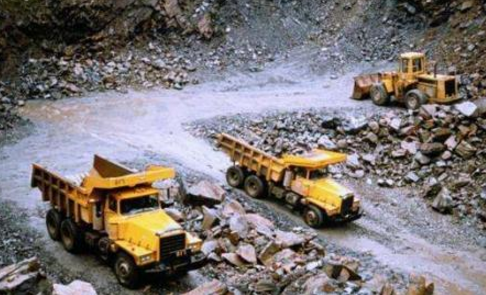QUITO, Aug. 28 (Xinhua) -- Sirio Jimenez was one of the first locals to come to El Pangui, a canton in the Amazonian province of Zamora-Chinchipe, to work for the Chinese copper mine project Mirador.
The Ecuadorean now works as a welder in the open-pit mining project. About 80 percent of the workforce are Ecuadorian.
"The project is immense and has opened a source of employment," Jimenez said. "The Chinese are practically the ones providing us with work. From here, I put food on the table."
He feels a sense of pride in being among the first workers who got the mine going.
"I'm very pleased because I got the project off the ground," he said.
Mirador, developed by Chinese company EcuaCorriente, marked Ecuador's entry into large-scale mining, and has breathed new life into the local economy and employment.
"It has been a fundamental prop for generating employment," Rene Lojano, political chief of El Pangui, told Xinhua.
"It created 3,000 direct and indirect jobs. It energized commerce and as a result, the community's economic growth is quite considerable," Lojano said.
The canton's 9,000 people were "lucky" to have the project -- a symbol of China-Ecuador cooperation -- developed locally, he said.
El Pangui, one of the country's far-flung areas, hopes to boost prosperity with the help of the project.
The mine will extract some 60,000 tons per day, following an initial phase of 30,000 tons, according to Mirador's electrical coordinator Carlos Logrono.
Since the construction phase began in 2012, the Chinese company has spent 70 million U.S. dollars to build infrastructure for the rural community of farmers and cattle ranchers, and some manufacturers.
"We have built community police units, health centers, public lighting, sanitation. The community has been developed with public works for the benefit of everyone," Lojano said.
The Chinese company has raised funds to build hospitals, schools, parks and other infrastructure. It has also established a university scholarship program for local youth and encouraged Chinese to teach at local schools.
Etsa is a small community of 19 families. The company has helped the locals set up a fish farming business breeding tilapia.
"Since the company and community began working together, we have benefited from agricultural projects and from the production of tilapia, which the company buys from us for its workers," Domingo Ushap, community president of Etsa, said.
Ushap said the company has maintained very close ties with the communities, collaborating in various areas.
The mine site is away from protected and ancestral lands, Hu Jiandong, president of EcuaCorriente, told Xinhua.
"Over the years we have striven to strengthen environmental protection, support for the community, and communication with the authorities," Hu said. "In addition, we strictly abide by labor regulations and tax payments, and we are committed to fulfilling our social responsibilities."
The Chinese company has an environmental management program in place to minimize the impact on local habitat, including hydroseeding and reforestation.
There are greenhouses and a botanical garden within the mine site, Carlos Loaiza, the company's biotic coordinator, said.
"We have some 8,000 plants in stock. Some are for environmental remediation," Loaiza said, referring to the practice of removing contaminants from soil and groundwater.
"Others are donated to schools, towns, the reforestation of watersheds, and reforestation as part of environmental education. It's part of the company's social responsibility," Loaiza said.




 A single purchase
A single purchase









